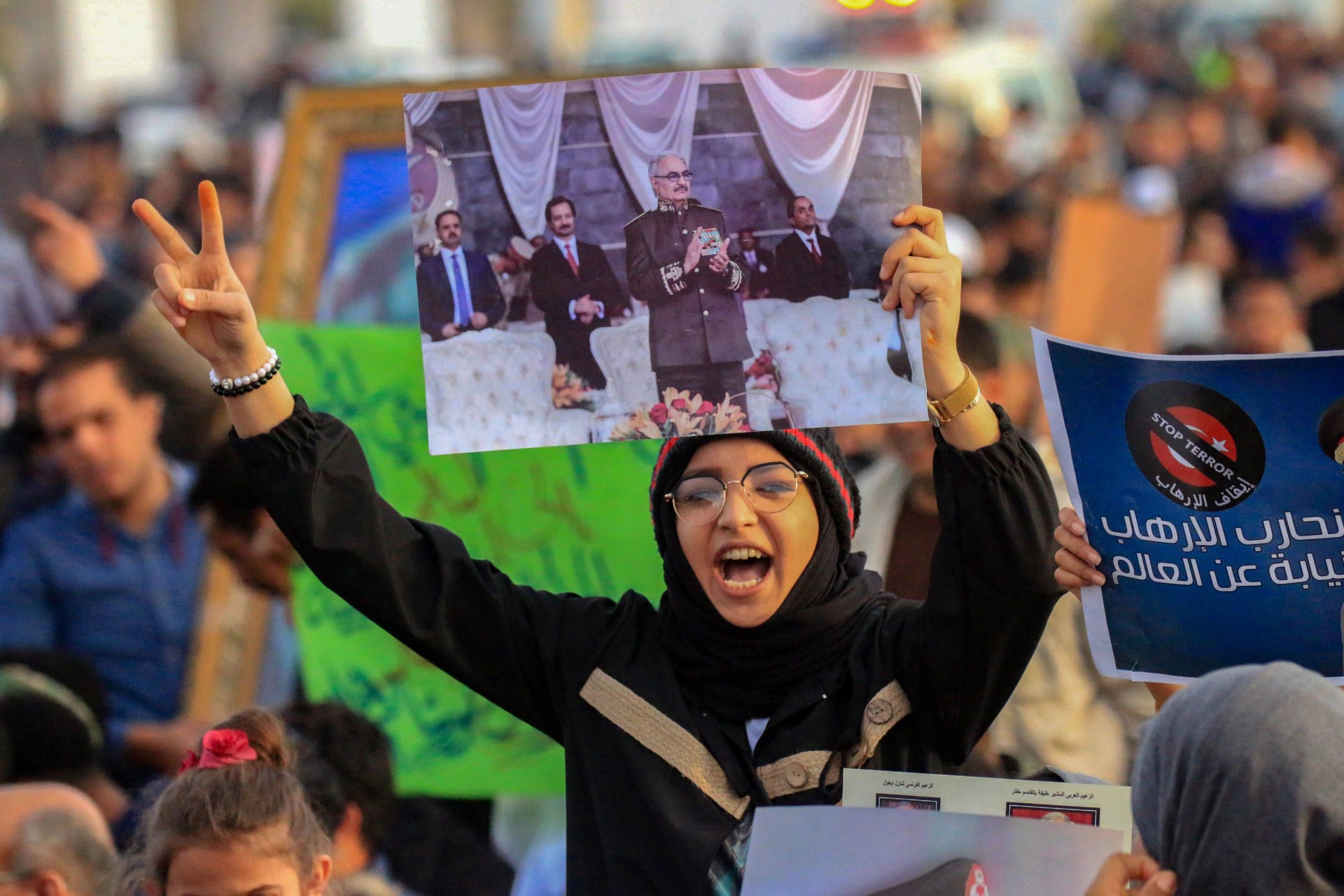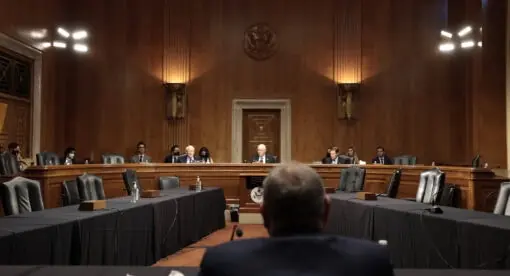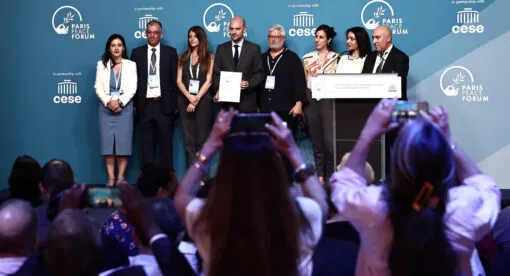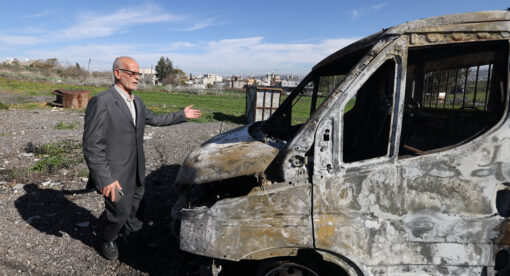Russia has several options for escalating its involvement in Libya’s civil war, but the West could make continued intervention too costly for Moscow’s liking.
Over the past year, Russia has significantly escalated its military involvement in Libya, in the form of direct military support to Gen. Khalifa Haftar’s forces. Moscow appears likely to continue to deploy resources in support of Haftar’s troops in an effort to break the conflict’s stalemate and turn it decisively toward their ally. This escalation could take any or all of several forms, with the most likely including the recruitment and deployment of Syrian militants to Libya, the insertion of Russian special operations forces, the deployment of elite Chechen units, and even direct airstrikes. The United States and other Western countries should make it clear to Moscow, either diplomatically or by increasing military support to their own Libyan allies, that no amount of escalation will bring a decisive Russian-backed victory in the conflict.
Russia, Haftar, and the LNA
Moscow’s involvement in Libya’s current civil war began in earnest in summer 2016, when Moscow invited Libyan National Army (LNA) leader Haftar to discuss Russian support for his forces against domestic opponents, initially focusing on Islamist extremists. Then, with the Syrian civil war entering a less active phase following the large-scale defeat of rebel forces in late 2016 and the near-eradication of the Islamic State’s territorial holdings in 2017, the Kremlin gained the bandwidth to deploy some of its resources elsewhere. After a series of meetings between Russian officials and Haftar in 2017 and 2018, reports of Russian mercenaries in Libya began to emerge, with 300 servicemen from the Wagner private military company reported in the Haftar stronghold of Benghazi in March 2019. These efforts scaled up later in the year, with stories of frontline fighting by Wagner troops alongside Haftar’s forces in their offensive against the capital, Tripoli (held by the rival Government of National Accord, or GNA) in September.
The exact number of Wagner servicemen and other Russian mercenaries presently in Libya is difficult to estimate. In December 2019, Turkish President Recep Tayyip Erdogan claimed that there were 2,000 such fighters in the country, a number which seems to have become widely accepted. The role these fighters have played in injecting professionalism and bolstering LNA morale is significant; one fighter with a pro-GNA militia told Foreign Policy in December that “Russian snipers” accounted for 30% of the deaths in his unit. Furthermore, the increased casualty numbers being reported for such forces indicate that they are likely playing an ever-more active role on the front lines; Russian investigative outlet Meduza confirmed that as many as 35 Russian mercenaries had been killed in Libya by October, most in heavy fighting.
Options for Escalation
It is telling, then, that despite these efforts, the LNA and their allies have made little to no advance on the ground. The initial LNA push, an all-out thrust on Tripoli, proved an abject failure, making no headway and actually losing ground in several areas from April to December 2019. Results in 2020 have been no better, with Haftar’s forces reduced to shelling civilian infrastructure such as the capital’s port while front lines stagnate and peace talks go nowhere. What, then, could Russia possibly do to tip the scales and enable a military advance?
One effort already underway is the apparent recruitment and transfer of Syrian militiamen to join pro-Haftar groups in Libya. Syrian opposition media reported in February that Russia was actively recruiting dozens of young men in Douma, a suburb of the capital Damascus. They offered an $800 salary for a three-month deployment, an enticing sum given the scale of the economic crisis now facing Syria. Twenty-five Syrian men had reportedly already departed for the Haftar stronghold of Benghazi in early February, with additional talks of deploying former members of the Desert Falcons, a now-dissolved pro-Assad militia that had been one of Syria’s largest. Other reliable sources corroborating this claim emerged later in March. While some of these fighters reportedly refused front line duty and returned home in mid-April, it appears that further Russian-paid and -equipped Syrian militants have continued to arrive to support Haftar’s forces.
Another likely move could be the insertion of Russian special operations forces to further buttress pro-Haftar forces. This was a go-to move throughout the Syrian conflict, with Russian Spetsnaz playing a key supporting role as light infantry in several campaigns, especially those for the cities of Palmyra and Aleppo. There are indications that some regular Russian personnel may have already deployed to Libya; one Russian soldier, reportedly killed in Libya and buried in his hometown in February, was a commissioned officer in the Russian military and not a private contractor. He may have been a military adviser of the sort present throughout Syria, or have been carrying out other duties entirely. Either way, the small-scale involvement of Russian special forces as a force multiplier on the ground both has precedent and would cost little enough financially and politically to make it a viable option in Libya.
There is another intriguing choice of ground forces available to the Kremlin, one it has not employed in Syria: Chechen special forces. The Muslim-majority southern Russian province of Chechnya has a rigid indigenous security structure, with as many as 30,000 servicemen, many of them highly trained, answerable directly to Chechnya’s Putin-appointed leader, Ramzan Kadyrov. While Kadyrov himself has repeatedly agitated to deploy Chechen forces to Syria to hunt jihadists there, his request was never granted, although Chechen military police have been sent in a non-combat role. Kadyrov himself has been involved in negotiations in Libya, primarily through his envoy, Lev Dengov, suggesting that the Chechen leader continues to angle to expand his influence abroad.
One of the benefits of using Kadyrov’s forces is that Chechens are Sunni Muslims – something that could ingratiate them more easily to the local Libyan population, as it did repeatedly in Syria. Kadyrov and Chechnya have regularly acted as the Kremlin’s envoy to the Muslim world, using their shared faith and experience against a domestic Islamist insurgency to warm relations with Arab autocracies in the Gulf and elsewhere.
One other seemingly unlikely option should not be ruled out: It is not inconceivable that Russia could launch direct airstrikes in Libya. The logistics would be difficult – it is not certain that bases currently used by Emirati forces in Libya would be sufficient to sustain Russian operations as well – but to some degree, they could be executed. Such a move would almost certainly not come until after the conclusion of Syria’s Idlib campaign, which includes a not-insignificant amount of Russian airpower. Airstrikes in Libya would be a massive escalation on Moscow’s part. Over everything else, however, it was direct, concerted airstrikes that tipped the scales in Syria – a fact that some in the Kremlin surely recognize.
Many factors could yet sway Moscow to pause or reverse its escalation in Libya. Continued overtly pro-Haftar action seems certain to seriously damage relations with Turkey, with whom Russia has painstakingly forged a working relationship in Syria. The recent steep fall in global oil prices will also hit Russian state finances hard, possibly forcing a recalculation of priorities for Moscow. Most simply, the Kremlin could decide that the potential gains in Libya are simply not worth more blood or treasure.
In this lies the greatest potential for U.S. and Western countries to counter Russia in Libya by raising the political and material cost of further Russian military activity in the country and making it clear that Moscow will not simply be allowed to impose victory for Haftar and the LNA there. An affirmation of U.S. commitment to the U.N.-backed GNA administration, alongside some form of economic and/or military aid, would force a serious recalculation for the Kremlin. Given recent GNA battlefield successes, such a move would be relatively low-risk for Washington. Until that occurs, expect to see Russia carry out one or more of the military options above in Libya.
Neil Hauer is a Canadian journalist and analyst based in Yerevan, Armenia. Hauer writes on Russia, Syria, and the Caucasus (both North and South). Follow him at @NeilPHauer.
The views expressed in this article are those of the author and not an official policy or position of the Newlines Institute.






